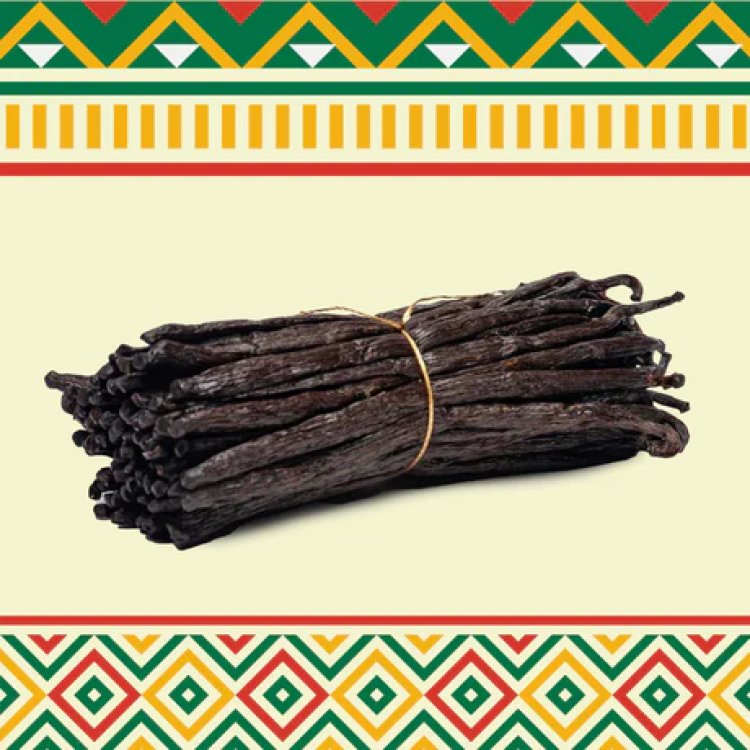The Art and Science Behind Vanilla Bean Manufacturing
Vanilla, with its warm and comforting flavor, is a ubiquitous ingredient in kitchens worldwide. While many of us are familiar with the distinctive aroma and taste of vanilla
Share this Post to earn Money ( Upto ₹100 per 1000 Views )

Vanilla, with its warm and comforting flavor, is a ubiquitous ingredient in kitchens worldwide. While many of us are familiar with the distinctive aroma and taste of vanilla, few may be aware of the intricate process behind vanilla bean manufacturing. In this blog, we will delve into the art and science that goes into cultivating, harvesting, and processing vanilla beans.
The Vanilla Orchid: Birthplace of Flavor
bulk vanilla beans are the fruit of the vanilla orchid, a delicate and intricate flowering plant native to Mexico. The process of vanilla bean manufacturing begins with the cultivation of these orchids, a task that demands patience and meticulous care.
-
Cultivation: The vanilla orchid thrives in tropical climates, requiring specific conditions to flourish. Typically, vanilla is grown near the equator, where the climate is warm and humid. The plants need to be sheltered from direct sunlight, and a balance of rain and dry periods is essential for optimal growth.
Vanilla orchids are often grown on wooden or metal supports, allowing the vines to climb and receive proper aeration. The cultivation process involves a careful balance of environmental factors to ensure healthy growth and the eventual development of vanilla pods.
Pollination: Nature's Delicate Dance
-
Hand Pollination: One of the most fascinating aspects of vanilla cultivation is its unique pollination process. In its native habitat, the vanilla orchid relies on specific species of bees and hummingbirds for pollination. However, in most vanilla-producing regions, these natural pollinators are absent.
Consequently, hand pollination becomes a crucial step in vanilla bean manufacturing. Skilled workers delicately transfer pollen from the male part of the flower (anther) to the female part (stigma), mimicking the action of bees or hummingbirds. This manual intervention ensures a higher yield and consistent quality.
From Flower to Green Bean: The Maturation Process
-
Harvesting: After successful pollination, the vanilla orchid produces green pods that gradually mature into the aromatic vanilla beans we know. Harvesting requires precision, as beans need to be picked at the right stage of maturity to ensure the best flavor profile.
Vanilla beans are typically harvested when the tips begin to turn yellow but before they fully ripen. Timing is critical, as harvesting too early or too late can impact the quality of the beans. Once harvested, the beans undergo a series of post-harvest treatments to unlock their full flavor potential.
The Art of Curing: Unveiling the Aroma
-
Fermentation: Vanilla beans are not immediately ready for consumption after harvesting. The green beans undergo a complex curing process that involves several steps. The first stage is fermentation, during which enzymes in the beans are activated.
Workers carefully gather the harvested beans, sort them, and expose them to the sun during the day. At night, the beans are wrapped in woolen blankets to sweat and undergo a controlled fermentation process. This stage is crucial in developing the distinct vanilla flavor we love.
-
Drying: Following fermentation, the beans are sun-dried to reduce moisture content. The drying process can take several weeks, and it is during this time that the beans develop their characteristic dark brown color. Drying also concentrates the vanilla flavor and aroma, transforming the beans into the prized ingredient sought after by chefs and home cooks alike.
Quality Control: Ensuring Excellence
-
Grading: Vanilla beans are subjected to rigorous quality control measures throughout the manufacturing process. After drying, the beans are sorted and graded based on factors such as size, appearance, and moisture content. The finest vanilla beans, often referred to as Grade A or gourmet vanilla, are plump, oily, and have a high moisture content, signifying a superior flavor profile.
-
Lower-grade beans may still be suitable for certain uses, but they might lack the depth of flavor and aroma found in the top-tier varieties. The grading process ensures that consumers have access to vanilla beans of varying qualities, catering to different culinary needs.
Conclusion: The Culmination of Craftsmanship
In conclusion, the journey from vanilla orchid to the aromatic vanilla bean is a testament to the skill, patience, and expertise of those involved in the manufacturing process. From the careful cultivation of orchids to the meticulous art of hand pollination, each step plays a crucial role in delivering the beloved flavor of vanilla to our tables.
As consumers, understanding the complexities of organic vanilla bean extract manufacturing enhances our appreciation for this seemingly simple yet extraordinary ingredient. The next time you savor the rich notes of vanilla in your favorite dessert or beverage, you can reflect on the craftsmanship and dedication that went into creating that delightful culinary experience.








